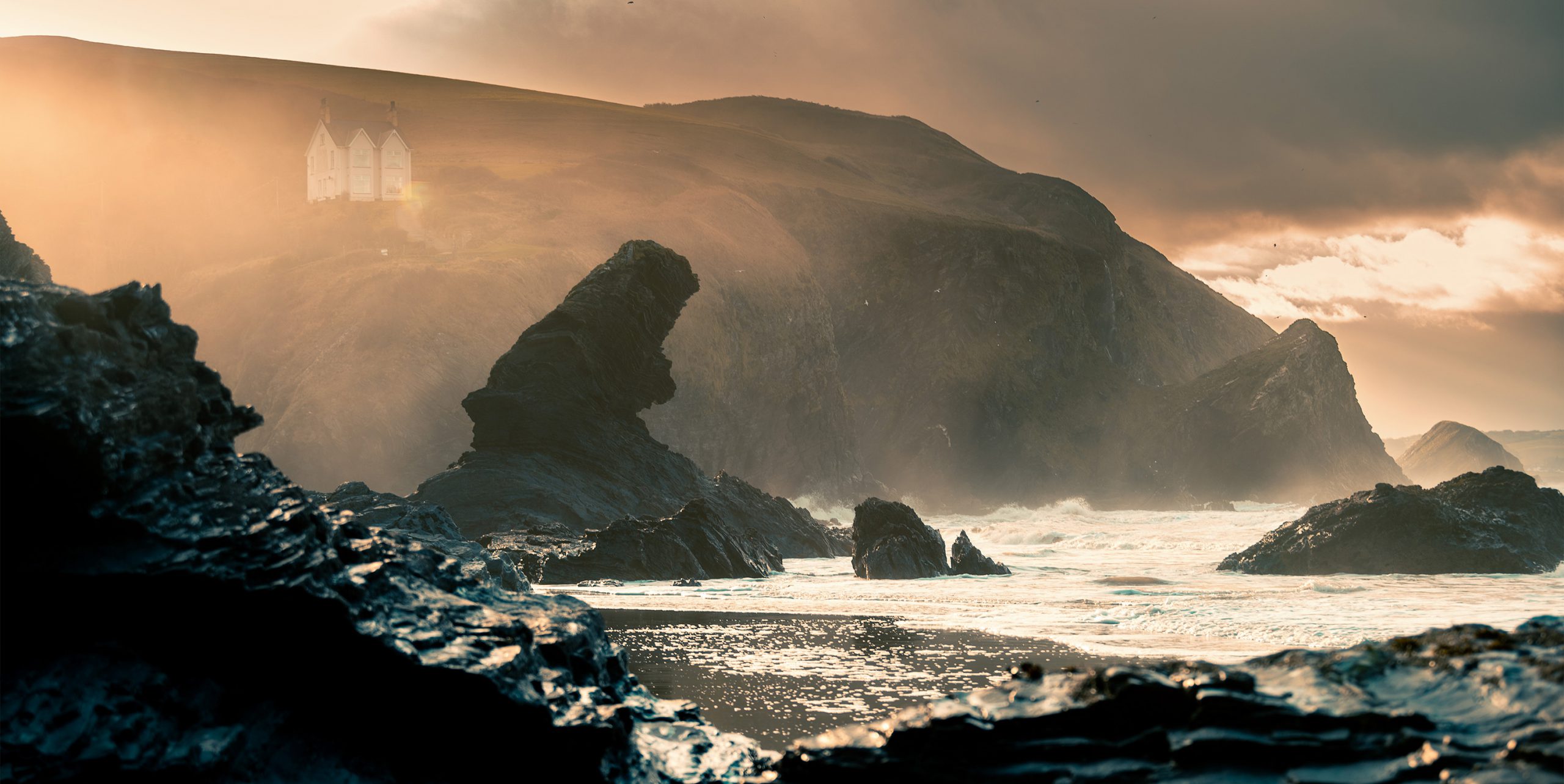
A gem of a coastal village, Llangrannog has a lot to offer local residents and visitors. With its vibrant community, cosy pubs and beautiful beaches it really is a lovely place to escape from the hustle-bustle of life.
The heart of the village lies away from the shore line up the steep valley, tucked away in the hillside. The settlement developed around the 6th Century Church established by Saint Carannog (Carantoc). The original church did not survive and the church that currently stands on the site was built around 1885. The original settlement, around the church, could not be seen from sea and so escaped the attention of the plundering Vikings and the Irish sea invaders of the day. There is now a statue dedicated to Saint Carannog on the coastal path to the right of the beach.
As the centuries passed, and life on the coast became safer, the seafront settlement was established. In the 19th Century it became a successful sea port, known for shipbuilding and fishing and there was also a woollen mill, deriving power from the river Hawen’s waterfall, in the village.
Today, tourism is the main business associated with Llangrannog and it comes alive during the summer months when people flock to enjoy the sandy beaches, breathtaking walks, lively pubs, seasonal events and beach cafés. But don’t be deceived, even during the winter months, Llangrannog is never dull. Kept alive by the vivacious local community and the revelry, often to be found at the Pentre Arms, or The Ship Inn, especially (but not limited to) during their live music events.
The main beach is split by the river Hawen and is predominantly sand. When the tide is out, it is possible to walk round to a second bay (Cilborth), between the large and distinctive sea-weathered Carreg Bica (Bica’s rock). Legend has it that Carrreg Bica is the tooth of the giant Bica, who lived in Ceredigion. He was forced to spit his tooth onto the beach when suffering a bad toothache. It is possible to walk, up some steep steps, to the cliff top which joins the Coastal Way path. So don’t worry if the tide cuts you off, there is an alternative way back. During the summer months the main beach is patrolled by RNLI lifeguards.
Llangrannog connects the scenic Coastal Way path between the beaches of Penbryn (to the South) and Cwmtydu (to the North). Heading North along the path you will come to one of the most photographed spots along the West Wales coastline, where the headland juts out to give you Ynys Lochtyn. A walk out onto the headland, dodging the sheep, offers breathtaking views of the Cardigan Bay coastline. For the more adventurous it is possible to cautiously scramble down the rocks and over to the separate piece of land known as Ynys Lochtyn (Lochtyn Island). This is a truly secluded spot and, with only nesting birds for company, it’s a great place to relax, enjoy a romantic picnic and do a spot of seal watching.
Further up the valley, perched on the edges of the coastline, is Llangrannog’s Gwersyll yr Urdd, a residential outdoor centre. It was founded in 1932 and has gone from strength to strength. It now offers a place to stay for school group adventures, team building for organisations or just a place for families to come and enjoy the outdoors. It has many facilities including a swimming pool, dry ski slope, indoor climbing centre, rope walk, trampolining, quad bikes, go-karting and horse trekking.
For more information on what LLangrannog has to offer please click here.
More Info
For more information on what Llangrannog has to offer please click here.
A more detailed history can be found here.
Public Transport
The Cardi Bach bus service does offer a service during the summer months. It is run by the local firm Richard Brothers and for more information click here.
3 Bed House - Detached

Offers in the region of £460,000
6 Bed House - Detached

Offers in the region of £350,000
5 Bed Land - Small Holding

Offers in excess of £900,000
2 Bed Cottage

Offers in the region of £270,000
